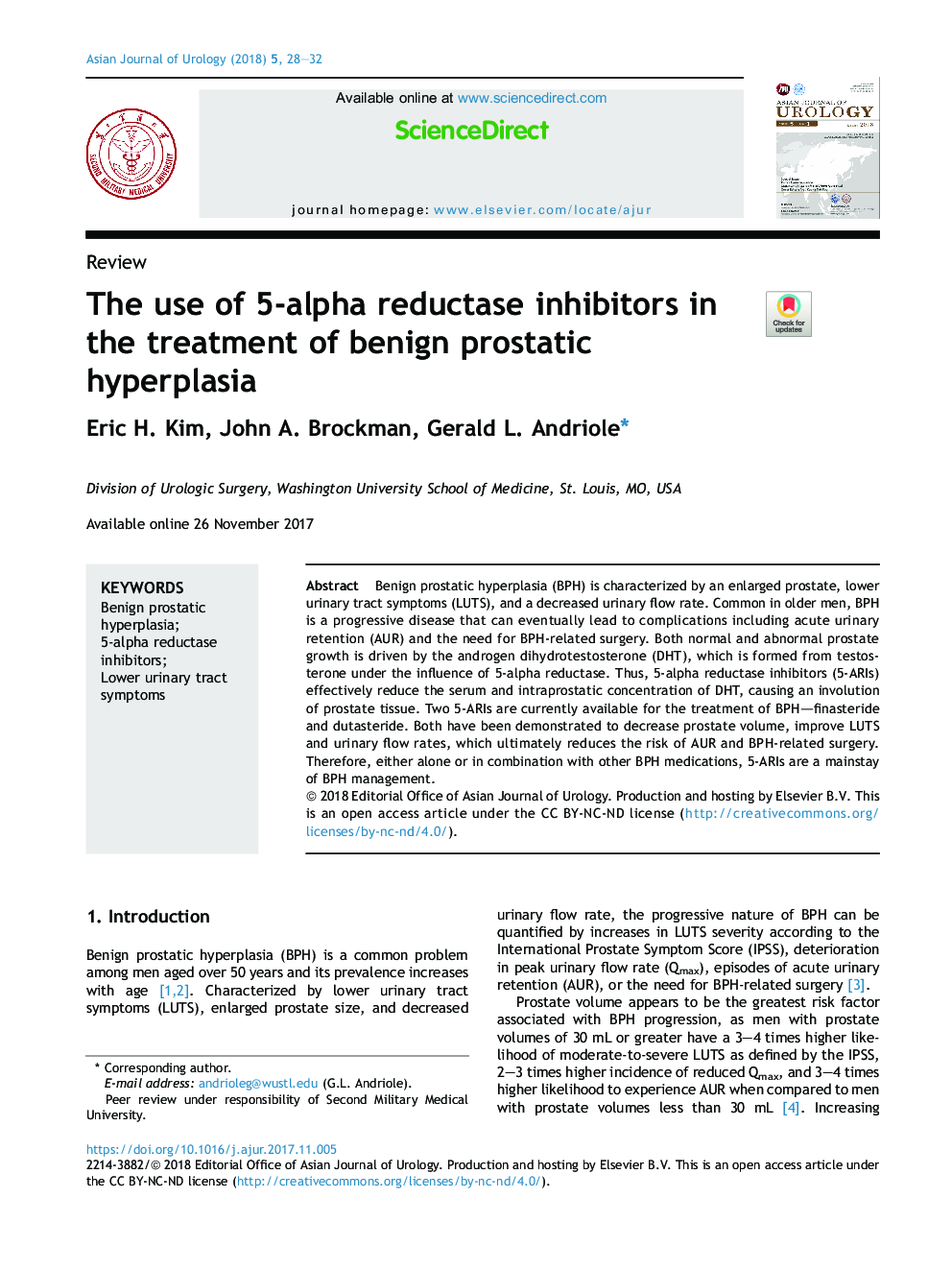| Article ID | Journal | Published Year | Pages | File Type |
|---|---|---|---|---|
| 8770117 | Asian Journal of Urology | 2018 | 5 Pages |
Abstract
Benign prostatic hyperplasia (BPH) is characterized by an enlarged prostate, lower urinary tract symptoms (LUTS), and a decreased urinary flow rate. Common in older men, BPH is a progressive disease that can eventually lead to complications including acute urinary retention (AUR) and the need for BPH-related surgery. Both normal and abnormal prostate growth is driven by the androgen dihydrotestosterone (DHT), which is formed from testosterone under the influence of 5-alpha reductase. Thus, 5-alpha reductase inhibitors (5-ARIs) effectively reduce the serum and intraprostatic concentration of DHT, causing an involution of prostate tissue. Two 5-ARIs are currently available for the treatment of BPH-finasteride and dutasteride. Both have been demonstrated to decrease prostate volume, improve LUTS and urinary flow rates, which ultimately reduces the risk of AUR and BPH-related surgery. Therefore, either alone or in combination with other BPH medications, 5-ARIs are a mainstay of BPH management.
Related Topics
Health Sciences
Medicine and Dentistry
Nephrology
Authors
Eric H. Kim, John A. Brockman, Gerald L. Andriole,
